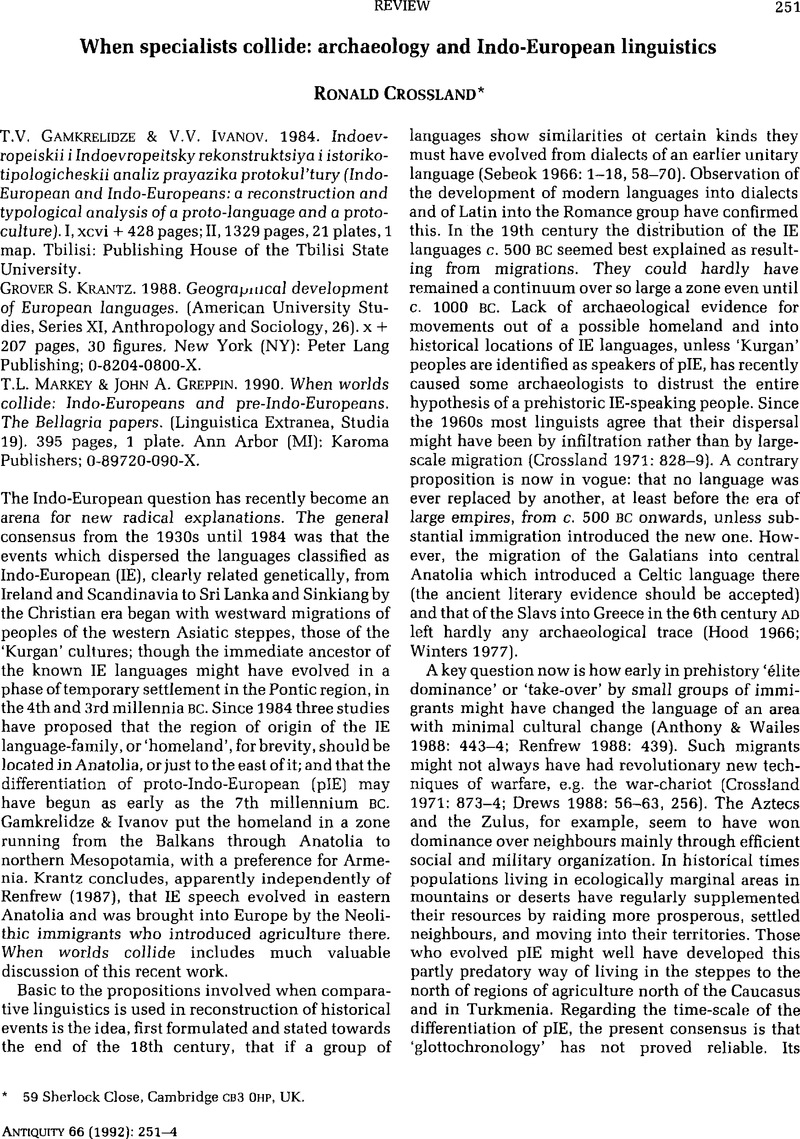Crossref Citations
This article has been cited by the following publications. This list is generated based on data provided by Crossref.
Zvelebil, Marek
1995.
At the Interface of Archaeology, Linguistics and Genetics: Indoeuropean Dispersals and the Agricultural Transition in Europe.
Journal of European Archaeology,
Vol. 3,
Issue. 1,
p.
33.



